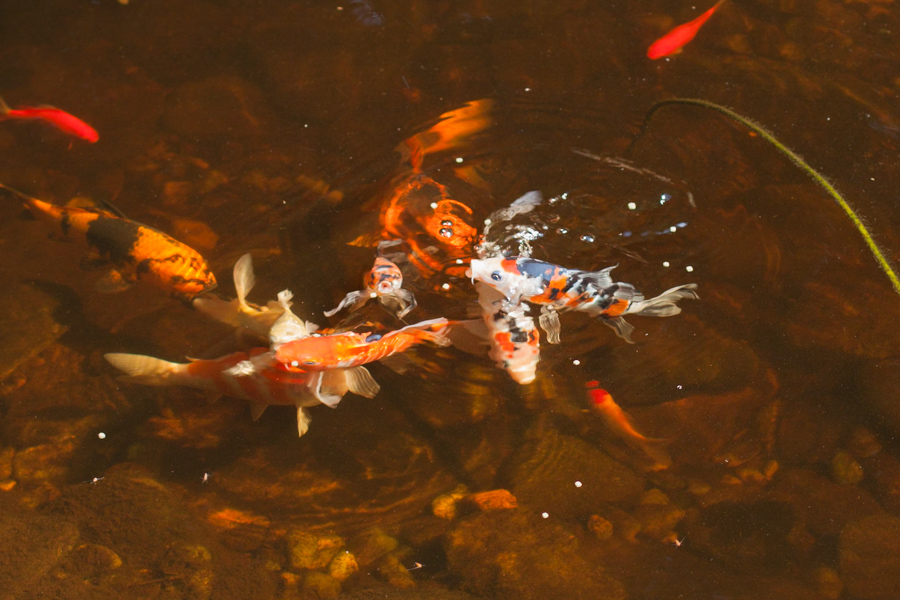
If you are searching for information on “How To Keep Your Water Quality High in Water Gardens & Garden Ponds” you probably have a backyard pond that could use some attention. Poor water quality can ruin the look, cause an odor, and even dramatically affect the health of your Koi or Goldfish. For the best pond equipment available in the Phoenix area call The Backyard Pond at 623-878-6695.
Water Quality Contents:
- Garden Pond Waste Removal
- Ultra Violet Water Sterilization
- Types Of Algae
- Balancing pH In Your Pond
- How you can balance your pond water
Whenever you think of water quality in garden ponds and water gardens, you think about two things: clarity and the ability to support aquatic life. Lack of clarity isn’t an issue for aquatic life, but it does limit the ability to enjoy and see our goldfish and koi. As a pond owner you should be concerned with both of these things.
Although it is true that you can keep koi and goldfish in ponds without filtration, it does limit the number of fish that you can have. When in the wild, fish have a lot of water that help keep toxins from their waste from building up to a dangerous level. Most hobbyists will want to have more fish than what their pond will support. Koi and goldfish will put waste into the water as ammonia, mainly through their gills. Adding the issues of organic compounds from plant matter, soil and fish feces that may be in the pond.
Garden Pond Waste Removal
To be able to get good water quality there needs to be a form of waste removal. There are two methods that are used in garden ponds and water gardens which are biological and mechanical filtration.
Mechanical Water Filtration
Mechanical filters will physically remove solids in the water by trapping the debris in some sort of sponge, mat, or brush. Mechanical filters are quite effective but often need to be frequently cleaned to remove the debris. Many biological filters are also considered a mechanical filter, depending on how they are used. For instance, the Signal in-pond filter 800 is both a biological and mechanical filter when used in a pond where this is the only filter. But, it is mainly used as a mechanical filter when you use it with another type of biological filter in larger water gardens or garden ponds. The mechanical filtration in many ponds comes in the form of a pond skimmer.
Biological Water Filtration
Biological filters are a very effective way of removing toxins from the water by breaking down ammonia into nitrates and nitrites. This is done by using naturally occurring bacteria that is called nitrobacter or nitrosomonas. Ammonia is broken down into the natural body of water, but because of the limited space around and in the pond, you will have to watch this. There needs to be an efficient place for bacteria to thrive and live. Inside of the biological filter is the place where there will be a material that the bacteria can be exposed to large quantities of oxygen and food. The best material for doing this is a fiber matting media that allows there to be a large surface area for the bacteria to colonize and also a void area that allows large amounts of water to go through carrying food for the bacteria.
Filter materials that are that are considered too dense will clog up the filter and not allow the water to go through. You are also able to increase the efficiency by adding concentrated solutions of enzymes and bacteria like Micro Lift NiteOut and Microbe Lift PL. Being able to provide plenty of oxygen to the bacteria by using air stones or towers in the filter help to increase the efficiency. There are other types of organisms like Blood Worms that will colonize in biological filters and break down organic compounds.
Biological filters in ponds need to run continuously during the seasons. If they have been down for more 3 hours, then the good bacteria will start to die. Biological filters need to be cleaned by using only chlorine free water to help avoid killing or removing the bacteria. Also the filter should not be over cleaned, rinse only the media that will let allow good water flow through the filter. The brown stain on the filter is actually the living bacteria.
Water Changes
The nitrates will be a result after the break down of ammonia and nitrites are food for the plants or food for algae if there aren’t plants available. If you plan to keep koi or goldfish and no plants, then you will need to do partial water changes to remove the nitrates and other types of compounds from the water. If you are able to keep plenty of aquatic plants, the large water changes aren’t really necessary, although the small water changes around every 5 weeks and about 20% of the water should be fine.
Ultra Violet Water Sterilization
There are certain times of the year or if the balance of biological filters, plants, or fish is off you could end up with green water due to single cell algae.
The best method of being able to guarantee clear water against this issue is using UV sterilizer. This device will use a germicidal UV lamp that will be placed in a pipe that allows water to pass around and will reduce algae by 99% when it is fitted in the right sized pond. Although, using a UV sterilizer doesn’t need to be used without the right type of biological filtration because the dead algae need to be broken down by the filter. UV sterilization doesn’t help with string algae. For that you should use OxyPond Cleaner, AlgaeFix, or Algaway and strive to have a well-balanced system that uses the methods below to keep the string algae lowered.
Types Of Algae
There are various types of algae. There are different textures and colors. The green velvet type that is found on the sides of ponds is beneficial that provides food and oxygen for koi and goldfish. This type of algae will help to give natural appearances to ponds. If you can’t tolerate this type of algae, you will have to get rid of your fish and use Fountec. This will remove this algae and is safe for all animals except fish and is safe for plants.
If you sometimes have issues with algae and other types of particles that interfere with the clarity of the water, then you may need to consider flocculants like AccuClear. This product works by causing particles to clump together and then fall to the bottom of the pond, where it can be removed by vacuuming or siphoning the bottom or having your mechanical filter remove the debris.
Another good product to use is packaged enzyme and bacteria combinations that will help to break down the sludge as well as other types of organic compounds.
Balancing pH In Your Pond
For your fish to be healthy and to help control the algae, the pH of your pond needs to be monitored by using a pH testing kit. The pH needs to be between 6.8-8.0 and the ideal being 7.0-7.8. If the pH is above 8.4 and below 6.6 then it is best to not try and adjust it.
If you have to adjust the pH of your water, then you will need a pH UP or pH down liquid that will raise or lower the pH.
How you can balance your pond water
A major concern for pond water is being able to maintain and achieving clear water. When a garden pond or water garden is first put in, there is normally a rush to fill them full of aquatic plants and fish, but it is vital that you consider the natural processes of the ecosystems. In nature, ponds will have a certain time for everything to adjust and interact while the pond evolves. Even though the suspended algae in water is to be expected many people want to keep it to a minimum. Constructed ponds will require a bit of help to avoid the issue of excess algae. One of these methods is to stock and then arrange the pond in this method:
- Remove the dead organic stuff from your pond.
- Add biological filtration and UV sterilizer.
- Keep rain run off out of the water. It will carry soil, chemicals, and fertilizers which will prevent the pond from balancing.
- If the pond is in full sun, there needs to be 50 to 70% shade of the pond surface. This needs to be done with floating plants such as water. If the pond is less than full sun, less coverage will be needed.
- Use Anacharis for every square foot of the surface that are under 50 square feet and one bunch for every 3 square foot for ponds up to 200 square feet. For ponds that are over 200 square feet, use one bunch for every 4 square feet.
- Use no more than one inch of fish for every square foot to begin with. After the pond has been fully established or with well filtered water, you may add more fish. Feed only what the fish are able to eat in 5 minutes. Uneaten food will lead to algae
Phoenix Area Pond Supply
If you are looking for live fish, live plants, pond filtration, pumps, or anything else you need to start or care for your water garden or garden pond The Backyard Pond has everything you need. We serve residents of the greater Phoenix area with the best selection of Koi, plants, and all the supplies you need. Stop by or give us a call at 623-878-6695 with your questions.
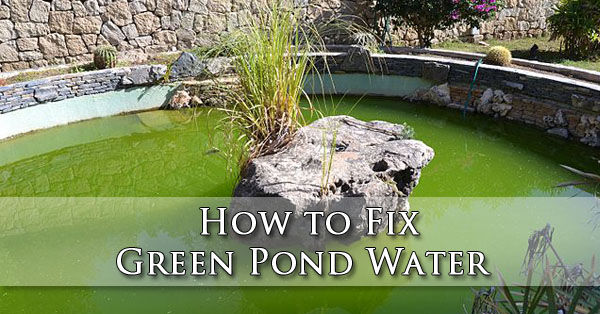
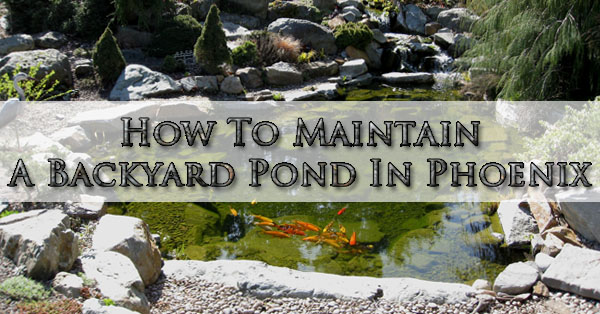
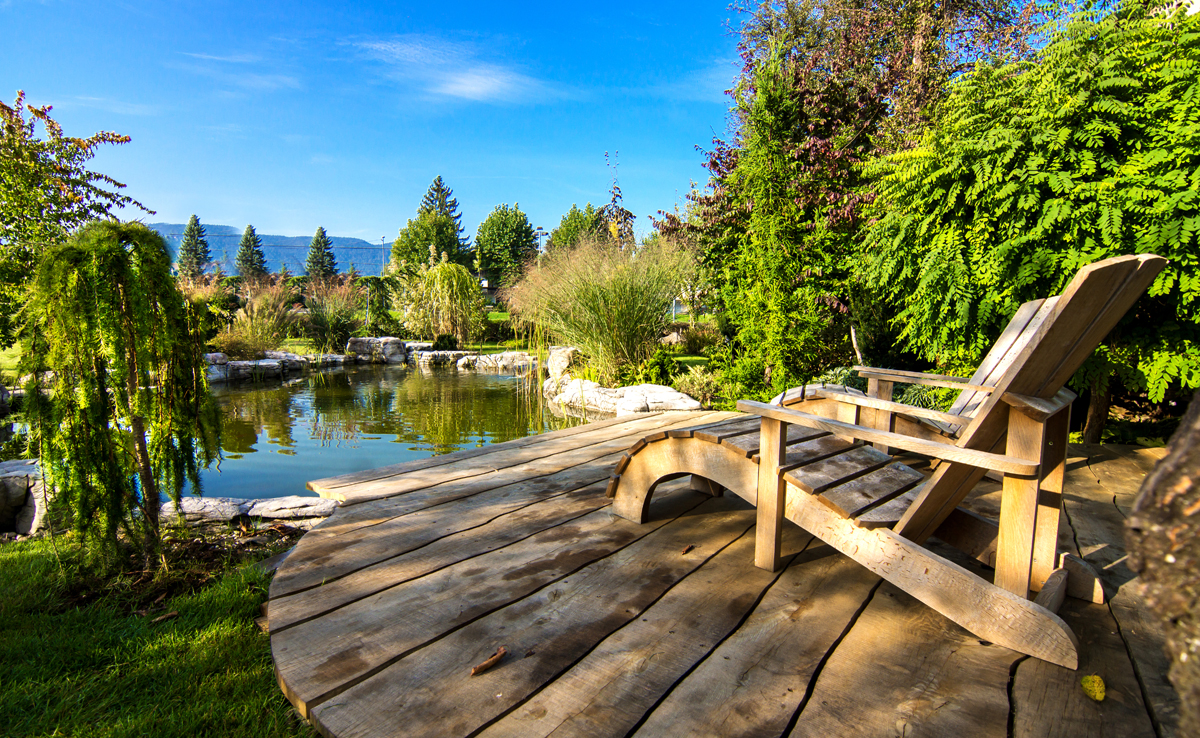 Having a pond in your backyard is a great centerpiece of your landscaping. However without proper maintenance it can become the monster lurking in your yard. Here are a set of steps for how to maintain a backyard pond.
Having a pond in your backyard is a great centerpiece of your landscaping. However without proper maintenance it can become the monster lurking in your yard. Here are a set of steps for how to maintain a backyard pond.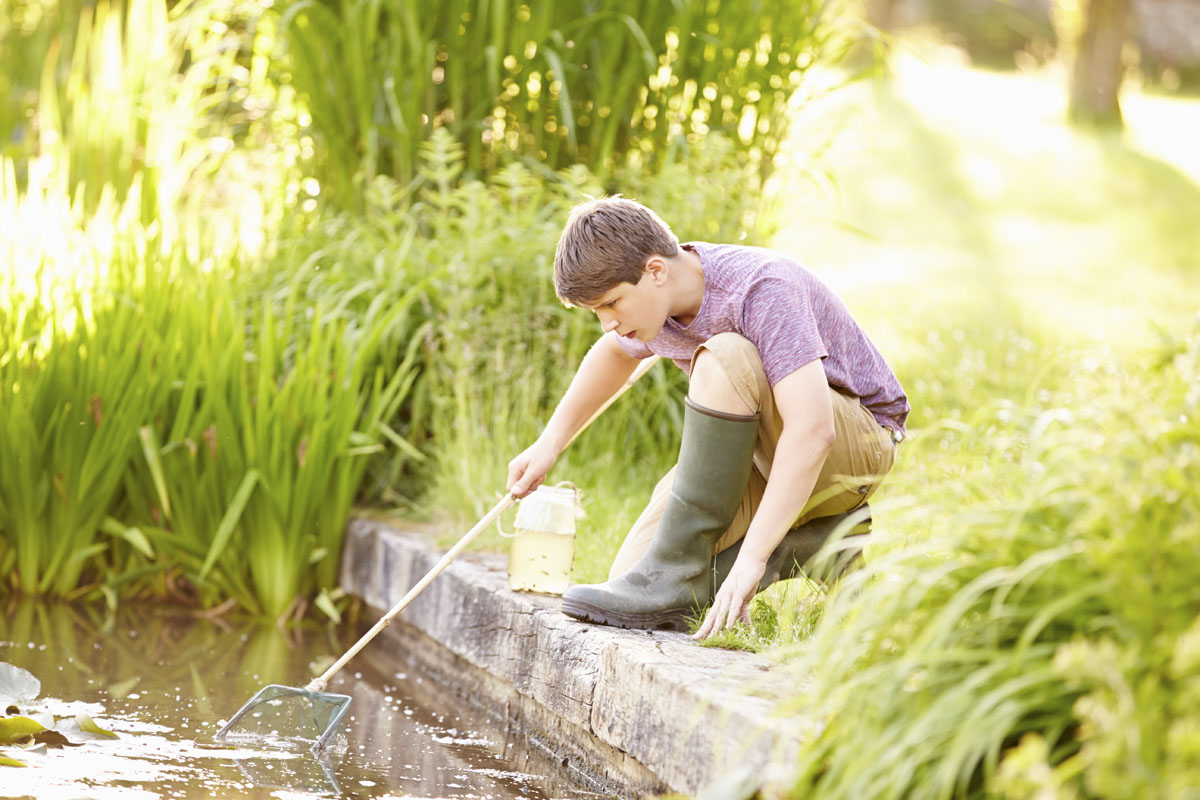
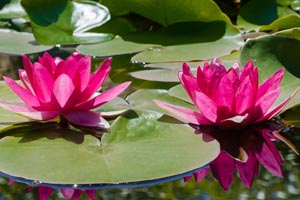
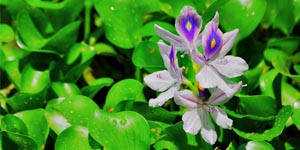
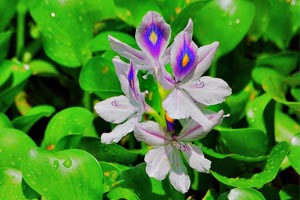 The water hyacinth are popular options for floating plants. It is a species that’ annual in colder areas of North America, but in warmer regions it is perennial. They can produce blue or purple flowers, with roots forming a ‘nest’ compacted under them. They provide an excellent filtering system to remove excess nutrients.
The water hyacinth are popular options for floating plants. It is a species that’ annual in colder areas of North America, but in warmer regions it is perennial. They can produce blue or purple flowers, with roots forming a ‘nest’ compacted under them. They provide an excellent filtering system to remove excess nutrients.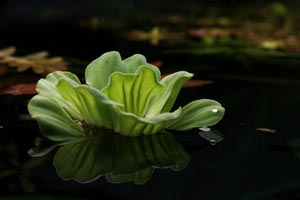 This is another free floating plant that is popular. Water lettuce is more warm/tropic climate plant which develops compact leaf clusters above the surface, while developing compact root mass under the plant.
This is another free floating plant that is popular. Water lettuce is more warm/tropic climate plant which develops compact leaf clusters above the surface, while developing compact root mass under the plant.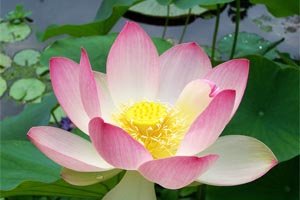 With a similar appearance to water lilies, a lotus is among the oldest aquatic plants cultivated, making an excellent part to a koi pond. Usually, their leaves are large, and can measure up to 18-inches across. This provides a great amount of shade for koi during summer months. Commonly confused with the water lilies, a lotus flower is fragrant and beautiful. Although, it needs to be noted that lotus flowers do have substantial growth rates, and best for a larger koi pond.
With a similar appearance to water lilies, a lotus is among the oldest aquatic plants cultivated, making an excellent part to a koi pond. Usually, their leaves are large, and can measure up to 18-inches across. This provides a great amount of shade for koi during summer months. Commonly confused with the water lilies, a lotus flower is fragrant and beautiful. Although, it needs to be noted that lotus flowers do have substantial growth rates, and best for a larger koi pond.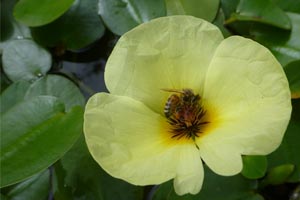 The water poppy produces smaller oval leaves with yellow flowers. They are a good option for a koi pond and grow rather fast during summer. It can provide a nice yellow accent to ponds, while providing a filtering system.
The water poppy produces smaller oval leaves with yellow flowers. They are a good option for a koi pond and grow rather fast during summer. It can provide a nice yellow accent to ponds, while providing a filtering system.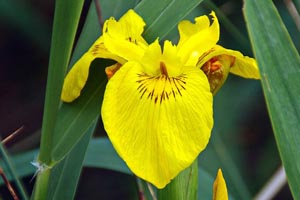 Another favorite for koi pond owners is the water iris, as there are several pieces to choose from. They provide a long sharp leaf, and based on the species can produce different color flowers, from white, blue, or yellow. Typically, these plants are placed in pots which are submerged in the water. The majority of water iris will survive in partial or full sun, which is good for those that have tree coverage.
Another favorite for koi pond owners is the water iris, as there are several pieces to choose from. They provide a long sharp leaf, and based on the species can produce different color flowers, from white, blue, or yellow. Typically, these plants are placed in pots which are submerged in the water. The majority of water iris will survive in partial or full sun, which is good for those that have tree coverage.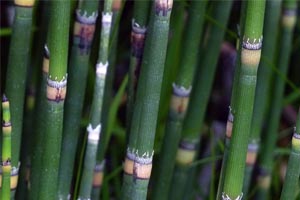 This is aplant that is quick to grow and produces slender green stems. It’s best positioned on a peripheral section of a pond, doing best in partial shade.
This is aplant that is quick to grow and produces slender green stems. It’s best positioned on a peripheral section of a pond, doing best in partial shade.